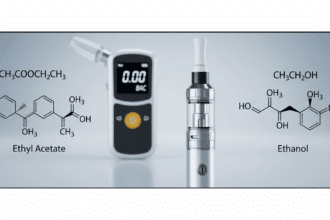The pursuit of athletic excellence has always been accompanied by the temptation to gain an unfair advantage through illegal means. Doping, or the use of performance-enhancing substances, is one of the most controversial issues in modern sports, threatening the integrity of competition and the health of athletes. This article delves into the forensic science Discover the fascinating field of Forensic Science, the application of scientific principles to legal matters. This post delves into its many disciplines, from DNA analysis to crime scene investigation, its importance in the justice system, Read Full Definition behind doping detection. It explores the evolution of doping techniques and ethical considerations. It also highlights some of the most infamous real-life doping cases.
Discover the fascinating field of Forensic Science, the application of scientific principles to legal matters. This post delves into its many disciplines, from DNA analysis to crime scene investigation, its importance in the justice system, Read Full Definition behind doping detection. It explores the evolution of doping techniques and ethical considerations. It also highlights some of the most infamous real-life doping cases.
- What is Doping?
- Forensic Science and Doping Detection
- Real-Life Doping Cases
- 1. Lance Armstrong: The Fall of a Cycling Legend
- 2. Maria Sharapova: Tennis Icon’s Meldonium Scandal
- 3. Ben Johnson: The 1988 Olympic Scandal
- 4. Marion Jones: From Olympic Glory to Shame
- 5. The Russian Doping Scandal: State-Sponsored Cheating
- 6. Alberto Salazar and the Nike Oregon Project
- Emerging Frontiers in Doping: Gene Doping and Omics Technologies
- The Athlete Biological Passport (ABP): A Revolutionary Tool
- The Ethical Dilemma: Preserving Fair Play in Sports
- Global Collaboration: A Unified Fight Against Doping
- The Importance of Education
- Conclusion: Striving for Integrity in Sports
- What is the definition of doping in sports?
- What role does forensic science play in the fight against doping?
- What are the legal consequences of doping?
- How does the Athlete Biological Passport (ABP) program work?
- What is Doping?
- Forensic Science and Doping Detection
- Real-Life Doping Cases
- Emerging Frontiers in Doping: Gene Doping and Omics Technologies
- The Athlete Biological Passport (ABP): A Revolutionary Tool
- The Ethical Dilemma: Preserving Fair Play in Sports
- Global Collaboration: A Unified Fight Against Doping
- The Importance of Education
- Conclusion: Striving for Integrity in Sports
- What is the definition of doping in sports?
- What role does forensic science play in the fight against doping?
- What are the legal consequences of doping?
- How does the Athlete Biological Passport (ABP) program work?
What is Doping?
Doping refers to the use of prohibited substances or methods to improve an athlete’s performance. These substances range from anabolic steroids and stimulants. They also include hormones, such as erythropoietin (EPO). Masking agents are designed to hide the presence of these drugs. Doping violates the principles of fair play. It can have severe health consequences, including heart problems, liver damage, and psychological disorders.
Forensic Science and Doping Detection
Forensic science plays a crucial role in the battle against doping. Modern techniques allow scientists to detect even minute amounts of banned substances in an athlete’s body. This provides robust evidence Evidence is any form of proof, such as objects, materials, or scientific findings, presented to establish or disprove a fact in a legal proceeding. It is used to reconstruct events and link or exclude individuals Read Full Definition of illegal performance enhancement.
Evidence is any form of proof, such as objects, materials, or scientific findings, presented to establish or disprove a fact in a legal proceeding. It is used to reconstruct events and link or exclude individuals Read Full Definition of illegal performance enhancement.
Common Testing Methods
- Blood and Urine Testing: The most prevalent method of testing for doping. Urine samples are analyzed for the presence of banned substances, while blood tests are used to detect hormones and blood-boosting substances like EPO.
- Gas Chromatography-Mass Spectrometry (GC-MS): This highly sensitive technique separates the different components of a sample and identifies the banned substances by comparing their mass spectra with known drug profiles.
- Carbon Isotope Ratio Mass Spectrometry (CIR-MS): CIR-MS is used to differentiate between naturally occurring hormones and synthetic anabolic steroids, making it one of the most effective techniques for identifying doping.
- Nuclear Magnetic Resonance (NMR): NMR helps determine the molecular structure of compounds and can distinguish between natural substances and synthetic derivatives often used in doping.
Real-Life Doping Cases
1. Lance Armstrong: The Fall of a Cycling Legend
Lance Armstrong was a celebrated cyclist and cancer survivor. He became a symbol of perseverance by winning seven consecutive Tour de France titles between 1999 and 2005. However, his legacy crumbled in 2012. The United States Anti-Doping Agency (USADA) accused him of running the most sophisticated doping program in cycling history.
- Substances Used: Armstrong was found to have used EPO, human growth hormone (HGH), and testosterone. He also performed blood transfusions to enhance his endurance.
- Outcome: Armstrong was stripped of all seven of his Tour de France titles and banned from competitive cycling for life. His case highlighted the extent of systematic doping within cycling.
2. Maria Sharapova: Tennis Icon’s Meldonium Scandal
In 2016, tennis star Maria Sharapova was suspended from professional tennis. She tested positive for meldonium. Meldonium is a heart medication that had been added to the World Anti-Doping Agency’s (WADA) list of banned substances at the beginning of that year.
- Substance Used: Meldonium, a drug that improves blood flow and boosts endurance.
- Outcome: Sharapova admitted to taking meldonium but claimed she was unaware it had been banned. Her initial two-year suspension was reduced to 15 months after the Court of Arbitration for Sport (CAS) ruled that she had not intended to break the rules.
3. Ben Johnson: The 1988 Olympic Scandal
Canadian sprinter Ben Johnson became a global sensation. He won the 100 meters at the 1988 Seoul Olympics in a world-record time. Just days later, he tested positive for the anabolic steroid stanozolol, leading to one of the biggest doping scandals in Olympic history.
- Substance Used: Stanozolol, an anabolic steroid that increases muscle mass and strength.
- Outcome: Johnson was stripped of his gold medal, and the scandal led to major anti-doping reforms, including the establishment of WADA in 1999.
4. Marion Jones: From Olympic Glory to Shame
American track and field star Marion Jones won five medals at the 2000 Sydney Olympics, but her career was tainted when she admitted to using performance-enhancing drugs supplied by the Bay Area Laboratory Co-Operative (BALCO).
- Substances Used: Tetrahydrogestrinone (THG), a designer anabolic steroid that was undetectable by drug tests at the time, and EPO.
- Outcome: Jones was stripped of her Olympic medals, sentenced to six months in prison for lying to federal investigators, and banned from the sport. The BALCO scandal led to new drug tests for previously undetectable substances.
5. The Russian Doping Scandal: State-Sponsored Cheating
One of the largest doping scandals in history, the Russian doping scandal involved state-sponsored doping of Russian athletes at the 2014 Winter Olympics in Sochi. The scandal was exposed by whistleblower Grigory Rodchenkov, the head of Russia’s anti-doping laboratory.
- Substances Used: Various anabolic steroids and performance-enhancing drugs.
- Outcome: Russia was banned from competing under its national flag at the 2018 Winter Olympics. Several athletes were disqualified, and WADA implemented stricter anti-doping measures globally.
6. Alberto Salazar and the Nike Oregon Project
Renowned coach Alberto Salazar, who headed the Nike Oregon Project, was banned for four years in 2019 for violating anti-doping rules. Salazar was accused of administering testosterone to athletes and tampering with doping evidence.
- Substance Used: Testosterone and other performance-enhancing drugs.
- Outcome: The Nike Oregon Project was disbanded, and Salazar was banned from coaching. His case highlighted the role of coaches in facilitating doping among elite athletes.

Emerging Frontiers in Doping: Gene Doping and Omics Technologies
As traditional doping techniques are increasingly being detected, athletes and coaches are turning to new frontiers such as gene Genes are DNA segments (or RNA in some viruses) that dictate cellular processes, traits, and hereditary information, promoting genetic diversity and evolution in living organisms. Read Full Definition doping. Gene doping involves altering an athlete’s genetic material to enhance performance. Unlike traditional doping, gene doping leaves no chemical traces, making it extremely difficult to detect.
Genes are DNA segments (or RNA in some viruses) that dictate cellular processes, traits, and hereditary information, promoting genetic diversity and evolution in living organisms. Read Full Definition doping. Gene doping involves altering an athlete’s genetic material to enhance performance. Unlike traditional doping, gene doping leaves no chemical traces, making it extremely difficult to detect.
Omics technologies, such as genomics
The Athlete Biological Passport (ABP): A Revolutionary Tool
The Athlete Biological Passport (ABP), introduced by WADA, is one of the most significant advancements in anti-doping technology. The ABP tracks an athlete’s biological markers over time, making it easier to spot deviations from their normal profile. This long-term monitoring allows anti-doping authorities to detect performance-enhancing methods, such as blood doping and EPO use, even without directly detecting banned substances.
The Ethical Dilemma: Preserving Fair Play in Sports
While advances in forensic technology have significantly improved doping detection, the ethical dilemma remains. Athletes, driven by the desire for success and the immense pressure to win, may feel compelled to resort to doping. The real challenge lies in changing the culture of sports to prioritize fair play, sportsmanship, and health over victory at any cost.
Anti-doping efforts must not only focus on catching offenders but also on educating athletes about the dangers of doping and promoting clean competition. Organizations like WADA and USADA raise awareness about doping. They also enforce sanctions against those who violate doping regulations.
Global Collaboration: A Unified Fight Against Doping
The fight against doping requires global cooperation. Information-sharing between countries, sports organizations, and forensic scientists is essential in staying ahead of evolving doping techniques. Collaborations between law enforcement and anti-doping agencies also help crack down on the trafficking of prohibited substances and dismantle doping networks.
The Importance of Education
Preventing doping is not just about detection—education plays a pivotal role. Athletes, coaches, and sports professionals must understand the consequences of doping, both for their health and their careers. Educational programs emphasizing ethics, fair play, and the long-term dangers of performance-enhancing drugs can create a stronger culture of clean competition.
Conclusion: Striving for Integrity in Sports
Doping continues to be a major issue in modern sports, but the advancements in forensic science, legal frameworks, and education have strengthened the fight against it. Cases like those of Lance Armstrong, Ben Johnson, and Marion Jones serve as stark reminders of the consequences of cheating and the importance of maintaining integrity in sports.
As the landscape of doping evolves, anti-doping agencies, forensic experts, and sports organizations must remain vigilant and committed to ensuring a level playing field. With continued global collaboration, education, and ethical standards, we can foster a sports environment where fair play, honesty, and natural talent triumph.
What is the definition of doping in sports?
Doping refers to the unauthorized ingestion or administration of substances or methods designed to enhance athletic performance artificially. This practice not only compromises the principles of fair play but also poses significant health risks to athletes.
What role does forensic science play in the fight against doping?
Forensic science, especially forensic toxicology, provides the tools and techniques necessary to detect and analyze the presence of prohibited substances. It uses various analytical methods to identify and quantify these substances.
What are the legal consequences of doping?
Organizations like WADA and the USADA have established comprehensive anti-doping policies and testing protocols. Athletes found guilty of doping violations face stringent sanctions, ranging from temporary suspensions to lifetime bans, depending on the severity and frequencyFrequency is a fundamental concept in physics and wave theory. It refers to the number of times a specific point on a wave, such as a crest or trough, passes a fixed reference point in Read Full Definition of the offense.
How does the Athlete Biological Passport (ABP) program work?
The ABP program involves the longitudinal monitoring of selected biological variables in an athlete’s blood and urine samples over time. By establishing an individual’s baseline profile and tracking deviations from this baseline, the ABP can detect abnormal changes that may indicate doping.











